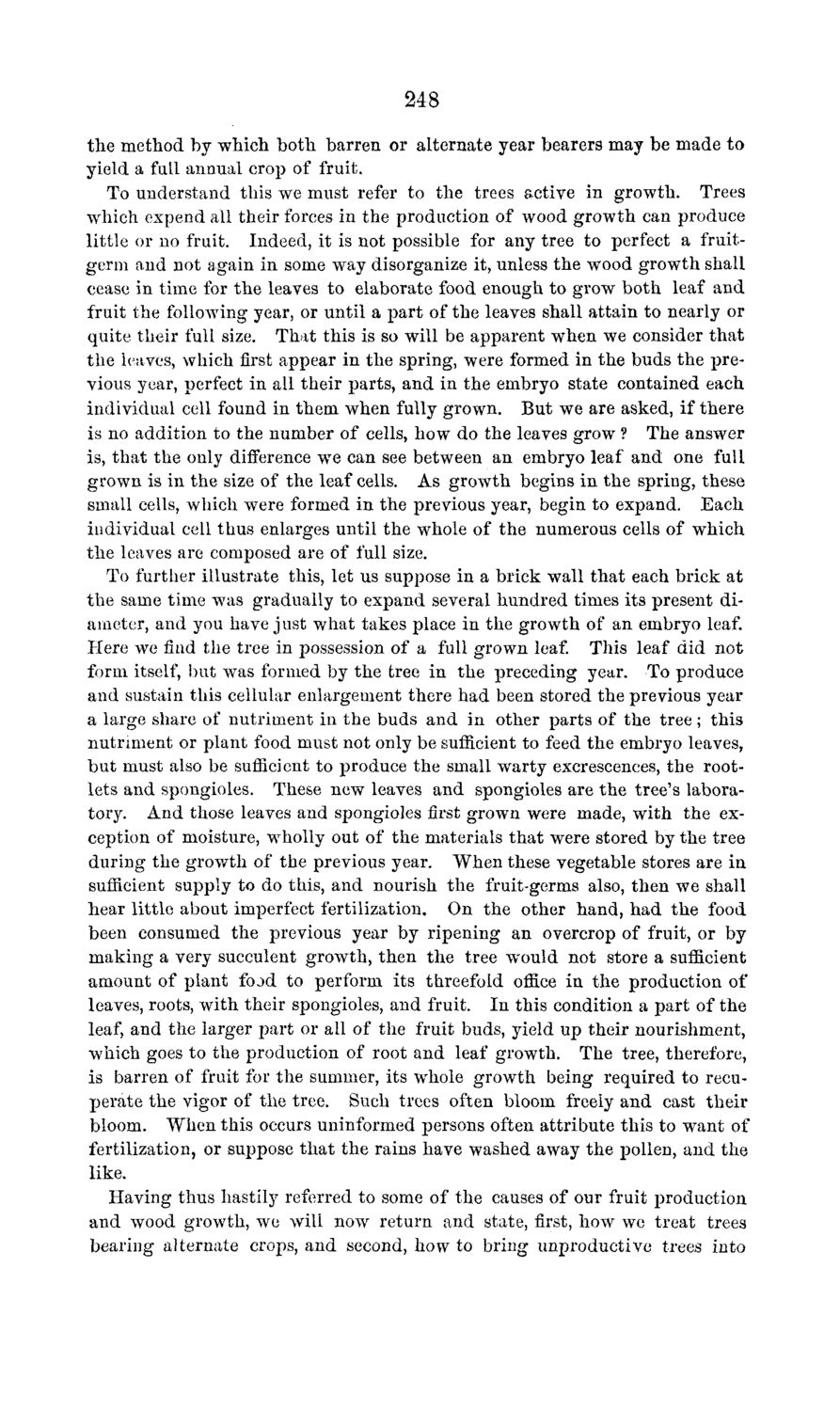| |
| |
Caption: Board of Trustees Minutes - 1869
This is a reduced-resolution page image for fast online browsing.

EXTRACTED TEXT FROM PAGE:
248 the method by which both barren or alternate year bearers may be made to yield a full annual crop of fruit. To understand this we must refer to the trees active in growth. Trees which expend all their forces in the production of wood growth can produce little or no fruit. Indeed, it is not possible for any tree to perfect a fruitgerm and not again in some way disorganize it, unless the wood growth shall cease in time for the leaves to elaborate food enough to grow both leaf and fruit the following year, or until a part of the leaves shall attain to nearly or quite their full size. That this is so will be apparent when we consider that the leaves, which first appear in the spring, were formed in the buds the previous year, perfect in all their parts, and in the embryo state contained each individual cell found in them when fully grown. But we are asked, if there is no addition to the number of cells, how do the leaves grow ? The answer is, that the only difference we can see between an embryo leaf and one full grown is in the size of the leaf cells. As growth begins in the spring, these small cells, which were formed in the previous year, begin to expand. Each individual cell thus enlarges until the whole of the numerous cells of which, the leaves are composed are of full size. To further illustrate this, let us suppose in a brick wall that each brick at the same time was gradually to expand several hundred times its present diameter, and you have just what takes place in the growth of an embryo leaf. Here we find the tree in possession of a full grown leaf. This leaf did not form itself, but was formed by the tree in the preceding year. To produce and sustain this cellular enlargement there had been stored the previous year a large share of nutriment in the buds and in other parts of the tree; this nutriment or plant food must not only be sufficient to feed the embryo leaves, but must also be sufficient to produce the small warty excrescences, the rootlets and spongioles. These new leaves and spongioles are the tree's laboratory. And those leaves and spongioles first grown were made, with the exception of moisture, wholly out of the materials that were stored by the tree during the growth of the previous year. When these vegetable stores are in sufficient supply to do this, and nourish the fruit-germs also, then we shall hear little about imperfect fertilization. On the other hand, had the food been consumed the previous year by ripening an overcrop of fruit, or by making a very succulent growth, then the tree would not store a sufficient amount of plant food to perform its threefold office in the production of leaves, roots, with their spongioles, and fruit. In this condition a part of the leaf, and the larger part or all of the fruit buds, yield up their nourishment, which goes to the production of root and leaf growth. The tree, therefore, is barren of fruit for the summer, its whole growth being required to recuperate the vigor of the tree. Such trees often bloom freely and cast their bloom. When this occurs uninformed persons often attribute this to want of fertilization, or suppose that the rains have washed away the pollen, and the like. Having thus hastily referred to some of the causes of our fruit production and wood growth, we will now return and state, first, how we treat trees bearing alternate crops, and second, how to bring unproductive trees into
| |